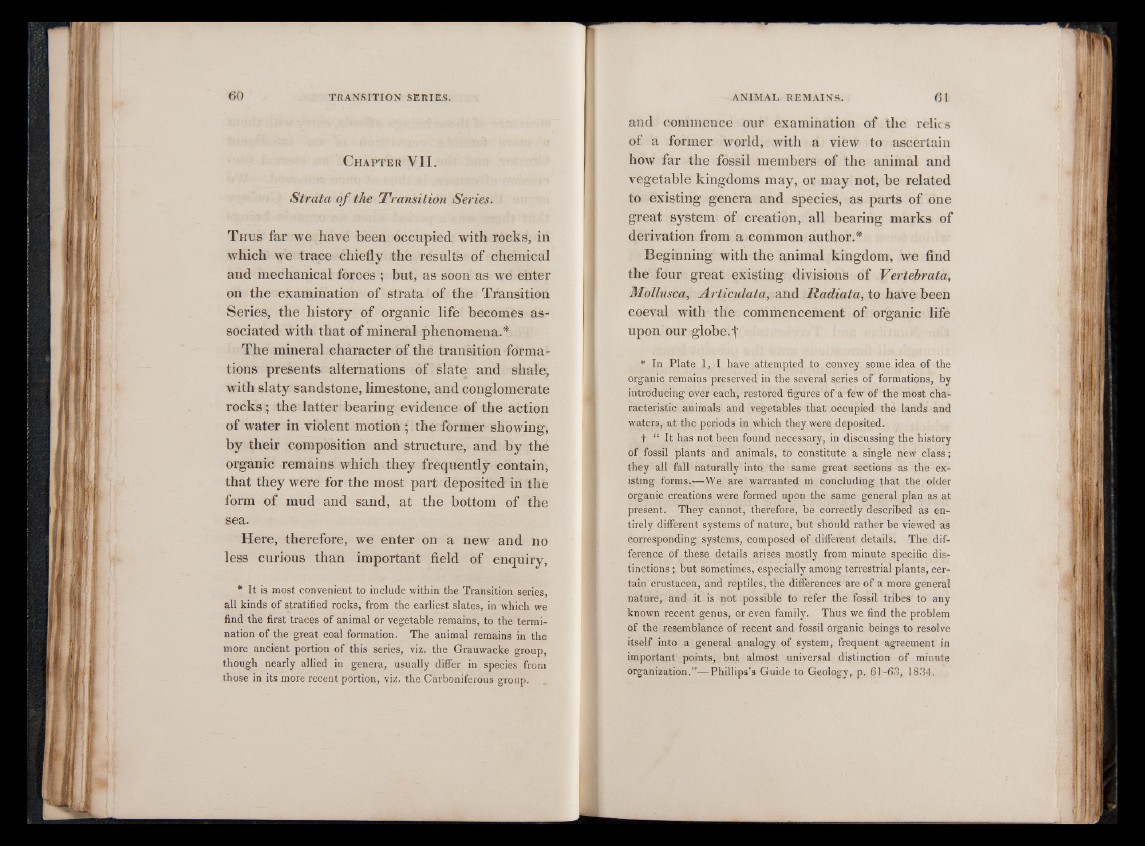
Chapter VII.
Strata o f the Transition Series.
Thus far we have been occupied with rocks, in
which we trace chiefly the results of chemical
and mechanical forces ; but, as soon as we enter
on the examination of strata of the Transition
Series, the history of organic life becomes associated
with that of mineral phenomena.*
The mineral character of the transition formations
presents alternations of slate and shale,
with slaty sandstone, limestone, and conglomerate
rocks ; the latter bearing evidence of the action
of water in violent motion ; the former showing,
by their composition and structure, and by the
organic remains which they frequently contain,
that they were for the most part deposited in the
form of mud and sand, at the bottom of the
sea.
Here, therefore, we enter on a new and no
less curious than important field of enquiry,
* It is most convenient to include within the Transition series,
all kinds of stratified rocks, from the earliest slates, in which we
find the first traces of animal or vegetable remains, to the termination
of the great coal formation. The animal remains in the
more ancient portion of this series, viz. the Grauwacke group,
though nearly allied in genera, usually differ in species from
those in its more recent portion, viz. the Carboniferous group.
and commence our examination of the relics
of a former world, with a view to ascertain
how far the fossil members of the animal and
vegetable kingdoms may, or may not, be related
to existing genera and species, as parts of one
great system of creation, all bearing marks of
derivation from a common author.*
Beginning with the animal kingdom, we find
the four great existing divisions of Vertebrata,
Mollusca, Articulata, and Radiata, to have been
coeval with the commencement of organic life
upon our globe.f
* In Plate 1, I have attempted to convey some idea of the
organic remains preserved in the several series of formations, by
introducing over each, restored figures of a few of the most characteristic
animals and vegetables that occupied the lands and
waters, at the periods in which they were deposited.
f “ It has not been found necessary, in discussing the history
of fossil plants and animals, to constitute a single new class;
they all fall naturally into the same great sections as the existing
forms.—We are warranted in concluding that the older
organic creations were formed upon the same general plan as at
present. They cannot, therefore, be correctly described as entirely
different systems of nature, but should rather be viewed as
corresponding systems, composed of different details. The difference
of these details arises mostly from minute specific distinctions
; but sometimes, especially among terrestrial plants, certain
Crustacea, and reptiles, the differences are of a more general
nature, and it is not possible to refer the fossil tribes to any
known recent genus, or even family. Thus we find the problem
of the resemblance of recent and fossil organic beings to resolve
itself into a general analogy of system, frequent agreement in
important points, but almost universal distinction of minute
organization.”— Phillips’s Guide to Geology, p. 61-63, 1834.